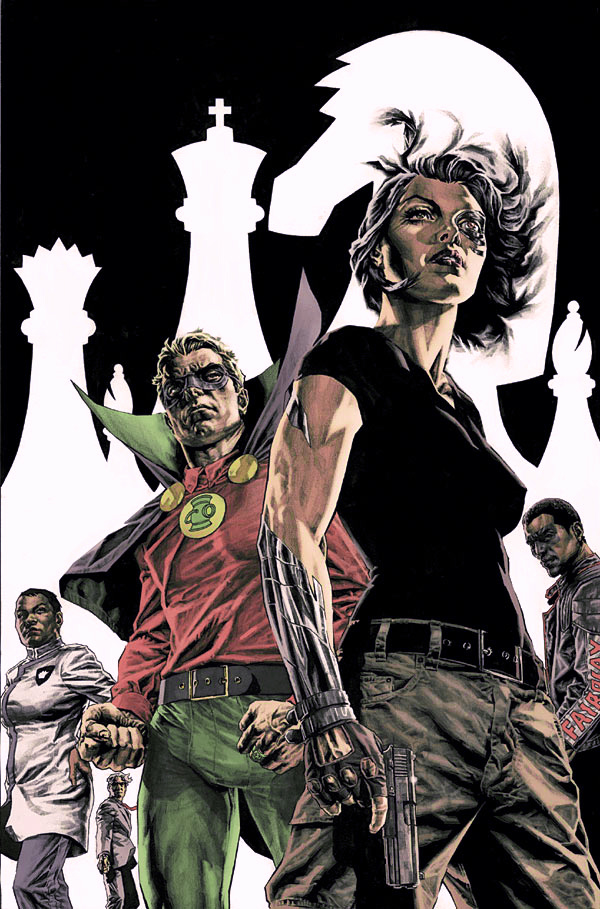Checkmate #1–7 by Greg Rucka (1–5), Rucka/Nunzio DeFillipis/Christina Weir (6, 7), Jesus Saiz (1, 2, 4, 5), Cliff Richards (3, 6, 7)
Even though Checkmate revives a previously used concept in the DC Universe (of which I have almost no knowledge apart from the John Ostrander Suicide Squad), these new stories are really an excuse for Greg Rucka to bring his masterful ability with espionage stories in his creator-owned Queen & Country to the colourful world of superheroes. This applies the ‘real world’ politics and spying in the context of keeping control of the world’s super-powered individuals who get out of line. Or, as the books says: a ‘UN chartered metahuman monitoring force’.
After the events of The OMAC Project and Infinite Crisis, the UN reorganises Checkmate to control the balance of power in metahuman communities. The organisation is run on the ‘rule of two’ for those in command (the ‘royal family’) – for every individual with power, there must be a non-powered counterpart in a corresponding position of authority. This is based on the chess motif inherent in the title: the White King is Alan Scott, the original Green Lantern; the White Queen is Amanda Waller; the Black King is Taleb Beni Khalid; the Black Queen is Sasha Bordeaux (originally created by Greg Rucka back when he was writing Detective Comics, but who has become a cyborg since then); and so on down the ranks, including bishops and knights. This is a very interesting set up, and Rucka passes on this information as clearly and succinctly as possible in what is a tough job in the first issue.
The heart of the book is the different layers to the stories as they progress, and the different levels of intrigue and political manoeuvring that occur: the UN resolution on Checkmate, Kobra’s cyclosarin, the Chinese metaprogram, the location of the cyclosarin, the manipulation from Waller. Mix in a relationship between Bordeaux and the superhero Mr Terrific, and you have a lot going on in each issue, with Rucka doing a fine job of spinning all the plates and presenting everything in an understandable and entertaining fashion. There is a good mix of plot, talking and action (which includes the traditional superhero fighting, but done for the story rather than to fill a quota), and it fills you with a sense of happiness that intelligent comic books are still being produced.
Of the two artists who draw the book, Saiz comes off the better: sharper pencils, well-choreographed action, a good storytelling sense, and a pleasant aesthetic. Richards (who has an unfortunate name – I couldn’t stop thinking of the ageing pop star) has a looser, sometimes sloppier style, which doesn’t feel as sharp or focussed.
The first four issues set up the new Checkmate, with the fifth being a standalone story. The last two issues of the collection see the return of Suicide Squad members in a heist story that doesn’t feel as cohesive as when Rucka was writing on his own. They are still enjoyable but it doesn’t have quite the same appeal as the political/espionage slanted stories. However, it is still nice to see a West Wing style of comic book in the DC Universe and being done so well.




